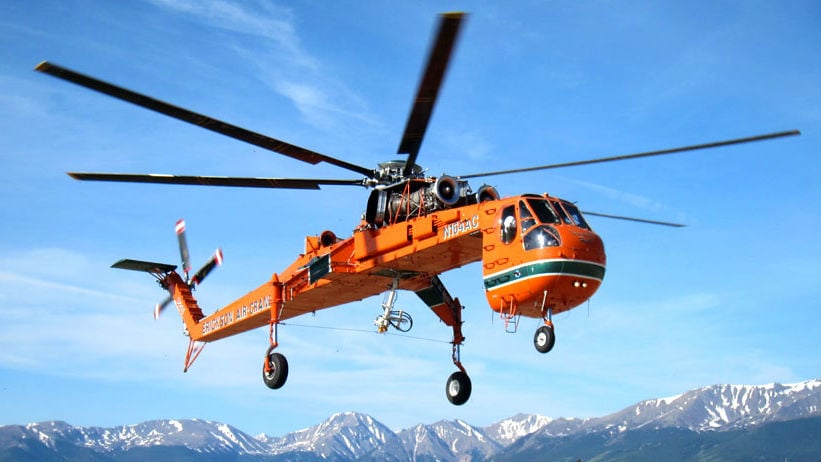Erickson and Sikorsky have signed a development agreement to integrate Sikorsky’s Matrix Technology for semi-autonomous and autonomous operation into the S-64 Air Crane.

The technology will power the next generation flight controls and navigations systems Erickson is developing for the heavy-lift juggernaut, with the aim of enhancing cockpit awareness and flight crew safety during day and night firefighting operations.
“We can start to look at how do we optimize the way that we fight fires,” said Hayden Olson, Erickson’s VP of aerosystems. “Erickson is committed to that because we feel like this mission, and the heroes that operate this mission are too important for us not to take the best technology that are available and try to figure out the most comprehensive solution that’s safe and efficient.”
The agreement will culminate with a demonstration of the technology in the S-64 in 2021.
“Our engineering crews are working hard right now to get the technology and work on the integration plan,” said Olson. “The way that matrix is designed, it has a really good application in legacy aircraft. And so for us, that was another reason why this technology was so important to apply to a to an Air Crane, and we’re looking forward to this integration.”
Sikorsky announced the launch of the Matrix Technology program in 2013, and it has been maturing it on two products: the Sikorsky Autonomy Research Aircraft (SARA) — a customized S-76B, and an optionally piloted UH-60A Black Hawk.
The system is being developed with the capability to adapt to different missions and aircraft types, and switch between modes enabling flight with two, one, or no pilot/s.
“It’s interesting how similar the system is, and how adaptable it is, to port from the Black Hawk to the [S-]64,” said Chris Van Buiten, Sikorsky’s VP of innovation. “Towards the end of this year, we’ll start flying operations [with the Black Hawk] with the switch in the zero position [full autonomy]. Right now, it’s flying augmenting two crew.”
At last year’s Heli-Expo, Sikorsky announced the S-92B (an upgraded version of the S-92) would become the first production aircraft to incorporate the technology.
Erickson has been the original equipment manufacturer of the S-64 since 1994, after purchasing the type certificate for the aircraft from Sikorsky.
The agreement with Erickson marks a historic first for the Matrix program.
“The whole intent is to learn – learn each other, learn the technology, and we’ll develop subsequent agreements as appropriate,” said Van Buiten.
However, given Sikorsky’s background with the S-64 (Erickson bought the type certificate from Sikorsky in 1992), it isn’t a step into the complete unknown. Van Buiten also highlighted the company’s shared values as an indication that it would be a good fit going forward.
“They had an excellent vision of modernizing firefighting,” he said.” As I understand it, they needed autonomous technology platform to fulfill that vision. . . . It was just a logical match, and a cultural match and a shared safety focus.”
Van Buiten said the demonstration flights would likely be limited to augmented flight with two pilots on board – at least to begin with. “That’s where you always start, and then you earn the right [to progress toward further autonomy] from there,” he said. “We’re doing the same thing on the Black Hawk. . . . You have to earn the right to have all the data, to have everything lined up, to be able to safely make that next step.”
Sikorsky is seeing “significant interest” in its Matrix technology from other companies, said Van Buiten.
“We’re not shying away from the mind-numbing work of the certification of the software to enable this level of responsibility,” he said. “It’s exciting, [Erickson is] a great partner, we’re looking forward to it.”









